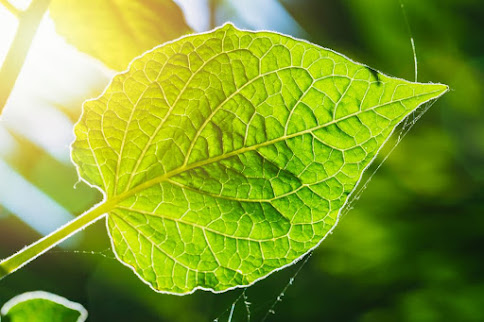PHOTOSYNTHESIS is a process done by plants, algae, and bacteria in which they convert
Co2(carbon-di-oxide), water, and sunlight into food (glucose) and oxygen in the presence of chlorophyll are called photosynthesis.
 |
| Photosynthesis takes in the carbon dioxide produced by all breathing organisms and reintroduces oxygen into the atmosphere (image credit Shutterstock) |
- PHOTOSYNTHESIS is a renewable process.
- It is done in the mesophyll cell of the leaf where chloroplasts are present.
- There are two types of photosynthetic processes: oxygenic photosynthesis and anoxygenic photosynthesis
The equation of photosynthesis is
6CO2 + 12H2O + Light Energy → C6H12O6 + 6O2 + 6H2O
C6H12O6 (Glucose) is formed which break into ATP (Adenosine Tri Phosphate) formation
ATP is the currency of the human body. This all process takes place in leaf so that why the leaf is known as the kitchen of the plant body.
The 4 requirements for photosynthesis to happen
- Chlorophyll. Chlorophyll, the pigment in plants that makes them green, is essential to the photosynthetic process. …
- Sunlight. The process cannot work without energy input, and this comes from the sun. …
- Water. …
- Carbon Dioxide
The glucose molecules provide organisms with two crucial resources: energy and fixed—organic—carbon.



4 Comments
Super very informative
ReplyDeleteYour welcome
DeleteSuper very informative
ReplyDeleteYour welcome
DeletePost a Comment
If you have any doubt, please let me Know